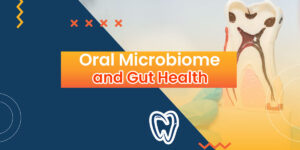Dental emergencies can happen at any time, causing pain and anxiety. Knowing how to handle these situations can make a significant difference in minimizing damage and alleviating discomfort. In this blog, we’ll provide you with concrete advice on what to do when faced with unexpected dental issues.
Toothache: Immediate Relief Steps
Rinse your mouth with warm water to clean the affected area.
Floss gently to remove any trapped debris that might be causing the pain.
Use a cold compress on the outside of your cheek to reduce swelling.
Avoid applying aspirin directly to the gums, as it can cause irritation.
Sparkle Dental Studio: Unleashing The Power Of Your Dazzling Smile
Knocked-Out Tooth: Preserve and Seek Immediate Attention
Hold the tooth by the crown (top) and avoid touching the root.
Rinse the tooth gently if it’s dirty, but do not scrub or remove any tissue.
Try to reinsert the tooth into its socket. If not possible, place it in a container with milk or your saliva.
Seek emergency dental care immediately; time is crucial for successful re-implantation.

Broken or Chipped Tooth: Save the Pieces
Collect any broken pieces of the tooth.
Rinse your mouth with warm water.
Apply gauze or a clean cloth to control any bleeding.
Visit your dentist promptly, providing them with the broken pieces if possible.
Lost Crown or Filling: Temporary Solutions
Clean the crown or filling and try to reposition it on your tooth using dental adhesive, toothpaste, or dental wax.
If you cannot reattach it, keep the affected area clean and visit your dentist as soon as possible.
Abscess or Swelling: Do Not Ignore
Rinse your mouth with a mild saltwater solution to alleviate discomfort.
Use a cold compress on the outside of your cheek to reduce swelling.
Avoid applying heat or placing aspirin on the affected area.
Seek immediate dental attention to address the infection.
Injuries to Soft Tissues: Control Bleeding
Rinse your mouth with a mild saltwater solution.
Apply pressure with gauze or a clean cloth to control bleeding.
Use a cold compress on the outside of your cheek to reduce swelling.
If bleeding persists, seek emergency dental care.
Object Lodged Between Teeth: Gentle Removal
Attempt to remove the object with dental floss gently.
Avoid using sharp or pointed instruments that could cause injury.
If unsuccessful, visit your dentist to prevent further damage.
While these steps offer initial guidance, it’s crucial to remember that professional dental care is essential in any emergency. Contact your dentist promptly and explain the situation to receive appropriate guidance or schedule an emergency appointment. Being prepared and acting promptly can make a significant difference in the outcome of dental emergencies.




